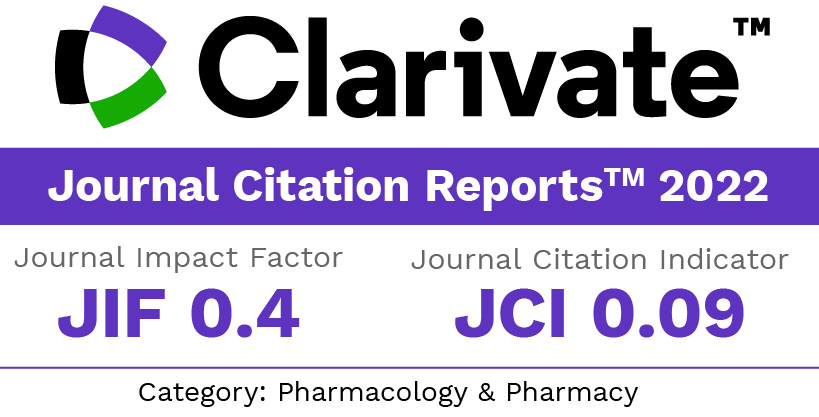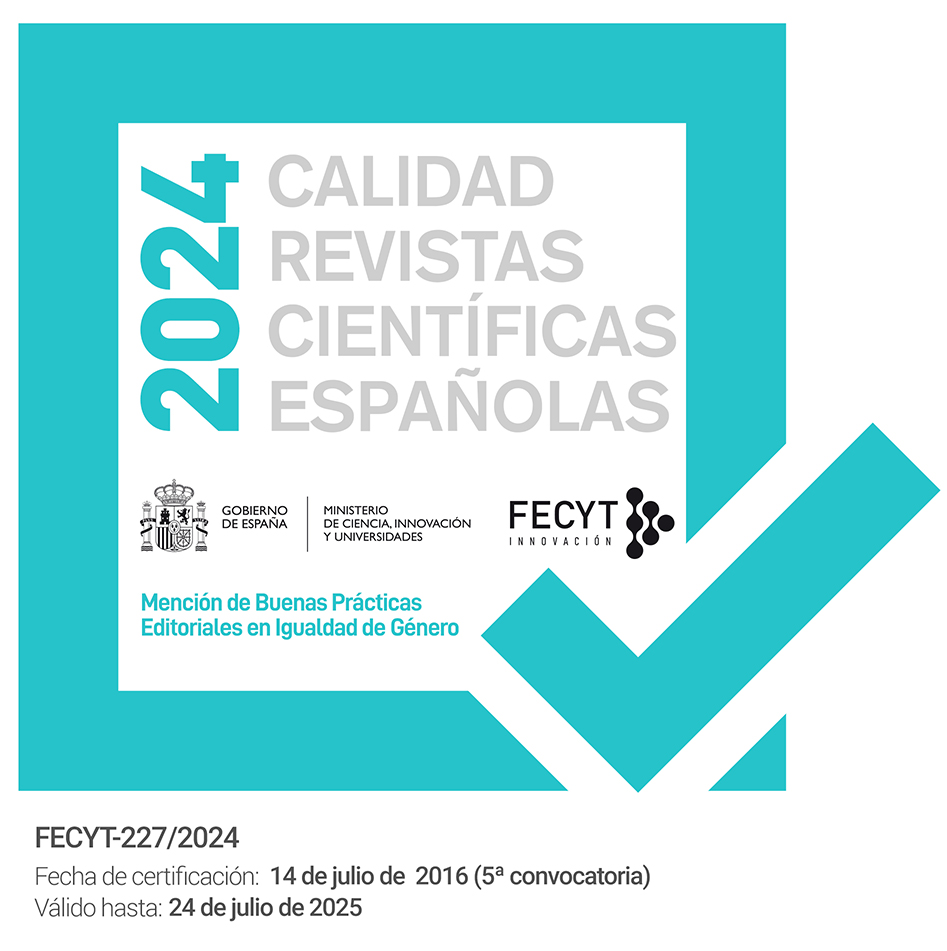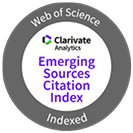Safety of Immunoglobulin G (Gammaraas®) in Patients Treated at a High-Complexity Clinic: A Descriptive Study
DOI:
https://doi.org/10.30827/ars.v66i3.32021Keywords:
Adverse effects; intravenous immunoglobulins; pharmacovigilance; therapeutic uses; retrospective studiesAbstract
Introduction: Recent years have seen an increase in the use of intravenous immunoglobulin (IVIG) for treating primary and secondary immunodeficiencies, as well as immune modulation. Despite being generally safe, IVIG can cause mild to severe adverse events. This study aimed to describe safety aspects of Gammaraas® 5 % in high-complexity clinic patients between 2020 and 2022.
Method: A retrospective observational study conducted at a high-complexity clinic between 2000 and 2022, involving patients treated with intravenous immunoglobulin G. Medical records were analyzed to collect demographic information, indication, medication dosage, and adverse events. Data were presented as absolute and relative frequencies for qualitative variables and measures of central tendency for quantitative variables. The ethical guidelines of the Helsinki Declaration were followed, and the study was approved by the institutional ethics committee.
Results: During the study period, 49 patients received the intravenous immunoglobulin G under the study. Males predominated with 27 (55.1 %), equally distributed between adults and pediatrics, with a median age of 17.2 years (IQR: 3.7-48.2), who received 98 infusions. Five patients (10.2 %) experienced adverse reactions, most of them classified as mild.The main indications were: idiopathic thrombocytopenic purpura, inflammatory myopathy, Guillain-Barre syndrome and “Kawasaki” lymphonodular mucocutaneous syndrome. Two patients experienced severe reactions wich were finally classified as not related to intravenous immunoglobulin G.
Conclusions: The intravenous administration of Gammaraas® 5 % was safe in 90 % of cases. The documented reactions were mild, which is consistent with the literature.
Downloads
References
Alsina L, Mohr A, Montañés M, Oliver X, Martín E, Pons J, et al. Surveillance study on the tolerability and safety of Flebogamma® DIF (10 % and 5 % intravenous immunoglobulin) in adult and pediatric patients. Pharmacol Res Perspect. 2017 Oct 25;5(5). DOI: 10.1002/prp2.345 DOI: https://doi.org/10.1002/prp2.345
Hartung HP, Mouthon L, Ahmed R, Jordan S, Laupland KB, Jolles S. Clinical applications of intravenous immunoglobulins (IVIg) – beyond immunodeficiencies and neurology. Clin Exp Immunol. 2009 Oct 30;158(Supplement_1):23–33. DOI: 10.1111/j.1365-2249.2009.04024.x DOI: https://doi.org/10.1111/j.1365-2249.2009.04024.x
Espinosa Rosales FJ, Bergés García A, Coronado Zarco IA, Dávila Gutiérrez G, Faugier Fuentes E, García Campos JA, et al. Consenso Mexicano para la prescripción de inmunoglobulina G como tratamiento de reemplazo e inmunomodulación. Acta Pediátrica de México. 2018;39(2):134. DOI:10.18233/apm39no2pp134-1711574 DOI: https://doi.org/10.18233/APM39No2pp134-1711574
Hernández-Martínez C, Espinosa-Rosales FJ, Espinosa-Padilla SE, Hernández-Martínez AR, Blancas-Galicia L. Conceptos básicos de las inmunodeficiencias primarias. Rev Alerg Mex. 2016;63(2):180–9. DOI: https://doi.org/10.29262/ram.v63i2.146
Katz J, Parikh K. Intravenous Immunoglobulin. Medscape . [Updated, Apr 21, 2023]. Disponible en: https://emedicine.medscape.com/article/210367-overview?form=fpf
Palabrica FRR, Kwong SL, Padua FR. Adverse events of intravenous immunoglobulin infusions: a ten-year retrospective study. Asia Pac Allergy. 2013 ;3(4):249–56. DOI: 10.5415/apallergy.2013.3.4.249 DOI: https://doi.org/10.5415/apallergy.2013.3.4.249
Kato H, Hayashi M, Ohashi W, Yamaguchi T, Tanaka S, Kozono A, et al. A Retrospective Observational Study of Adverse Reactions Associated With Intravenous Immunoglobulin Infusion. Front Immunol. 2021;12. DOI: 10.3389/fimmu.2021.740517 DOI: https://doi.org/10.3389/fimmu.2021.740517
Guo Y, Tian X, Wang X, Xiao Z. Adverse Effects of Immunoglobulin Therapy. Front Immunol. 2018;9. DOI: 10.3389/fimmu.2018.01299 DOI: https://doi.org/10.3389/fimmu.2018.01299
Ministerio de la Protección Social. Resolución 1403 de 2007 Por el cual se determina el modelo de Gestión del Servicio Farmacéutico, se adopta el manual de Condiciones Esenciales Procedimientos y se dictan otras disposiciones. [Internet]. 2007 [cited 2024 Feb 10]. p. 1–74. Available from: https://www.sanidadfuerzasmilitares.mil.co/transparencia-acceso-informacion-publica/2-normatividad/2-2-busqueda-normas/2-2-2-sistema-busquedas-normas-propio-1/normograma-digsa/subdireccion-salud-digsa/grupo-aseguramiento-salud-proas/normas-externas-aplicadas-al-regimen/resolucion-1403-2007-se-determina-modelo
Condino-Neto A, Costa-Carvalho BT, Grumach AS, King A, Bezrodnik L, Oleastro M, et al. Guidelines for the use of human immunoglobulin therapy in patients with primary immunodeficiencies in Latin America. Allergol Immunopathol (Madr). 2014;42(3):245–60. DOI: 10.1016/j.aller.2012.09.006 DOI: https://doi.org/10.1016/j.aller.2012.09.006
World Health Organization technical report series. International drug monitoring. The role of the hospital. Geneva; 1969.
Yori S, Belleri F, Testard J, Fierro Vidal A, Rousseau M. Intravenous immunoglobulin G use and pharmacovigilance in a tertiary care children’s hospital. Arch Argent Pediatr. 2021;119(3):192–7. DOI: 10.5546/aap.2021.eng.192 DOI: https://doi.org/10.5546/aap.2021.eng.192
Waheed W, Ayer GA, Jadoo CL, Badger GJ, Aboukhatwa M, Brannagan TH, et al. Safety of intravenous immune globulin in an outpatient setting for patients with neuromuscular disease. Muscle Nerve. 2019;60(5):528–37. DOI: 10.1002/mus.26678 DOI: https://doi.org/10.1002/mus.26678
Alomar MJ. Factors affecting the development of adverse drug reactions (Review article). Saudi Pharmaceutical Journal. 2014;22(2):83–94. DOI: 10.1016/j.jsps.2013.02.003 DOI: https://doi.org/10.1016/j.jsps.2013.02.003
Seidling V, Hoffmann J, Enk A, Hadaschik E. Analysis of High-dose Intravenous Immunoglobulin Therapy in 16 Patients with Refractory Autoimmune Blistering Skin Disease: High Efficacy and No Serious Adverse Events. Acta Dermato Venereologica. 2013;93(3):346–9. DOI: 10.2340/00015555-1471 DOI: https://doi.org/10.2340/00015555-1471
Sherer Y, Levy Y, Langevitz P, Rauova L, Fabrizzi F, Shoenfeld Y. Adverse Effects of Intravenous Immunoglobulin Therapy in 56 Patients with Autoimmune Diseases. Pharmacology. 2001;62(3):133–7. DOI: 10.1159/000056085 DOI: https://doi.org/10.1159/000056085
Dashti-Khavidak S, Aghamohammadi A, Farshadi F, Movahedi M, Parvaneh N, Pouladi N, et al. Adverse reactions of prophylactic intravenous immunoglobulin; a 13-year experience with 3004 infusions in Iranian patients with primary immunodeficiency diseases. J Investig Allergol Clin Immunol. 2009;19(2):139–45.
Struff WG, Klasser M, Eckert V, Dietrich RLJ. Safety monitoring of a polyvalent immunoglobulin preparation: documentation of 15,548 administrations. Int Journal of Clinical Pharmacology and Therapeutics. 2005 Sep 1;43(09):420–8. DOI: 10.5414/cpp43420 DOI: https://doi.org/10.5414/CPP43420
Orbach H, Katz U, Sherer Y, Shoenfeld Y. Intravenous immunoglobulin: adverse effects and safe administration. Clin Rev Allergy Immunol. 2005 Dec; 29(3):173-84. doi: 10.1385/CRIAI:29:3:173. DOI: 10.1385/CRIAI:29:3:173 DOI: https://doi.org/10.1385/CRIAI:29:3:173
Le Masson G, Solé G, Desnuelle C, Delmont E, Gauthier-Darnis M, Puget S, et al. Home versus hospital immunoglobulin treatment for autoimmune neuropathies: A cost minimization analysis. Brain Behav. 2018 Feb 26;8(2). DOI: 10.1002/brb3.923 DOI: https://doi.org/10.1002/brb3.923
Downloads
Published
How to Cite
Issue
Section
License
Copyright (c) 2025 Jhojan Sebastian Herrera Vargas

This work is licensed under a Creative Commons Attribution-NonCommercial-ShareAlike 4.0 International License.
The articles, which are published in this journal, are subject to the following terms in relation to the rights of patrimonial or exploitation:
- The authors will keep their copyright and guarantee to the journal the right of first publication of their work, which will be distributed with a Creative Commons BY-NC-SA 4.0 license that allows third parties to reuse the work whenever its author, quote the original source and do not make commercial use of it.
b. The authors may adopt other non-exclusive licensing agreements for the distribution of the published version of the work (e.g., deposit it in an institutional telematic file or publish it in a monographic volume) provided that the original source of its publication is indicated.
c. Authors are allowed and advised to disseminate their work through the Internet (e.g. in institutional repositories or on their website) before and during the submission process, which can produce interesting exchanges and increase citations of the published work. (See The effect of open access).























